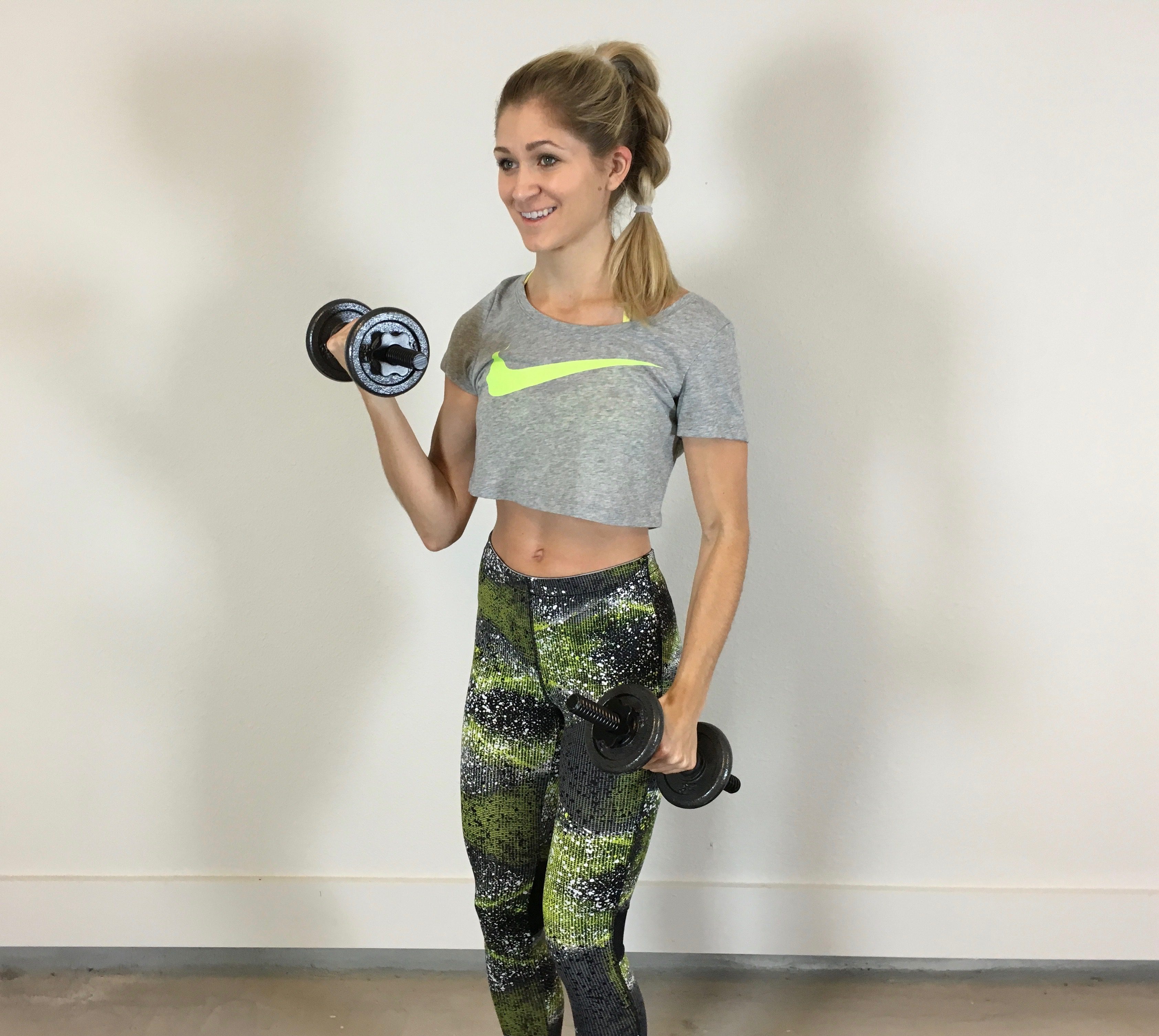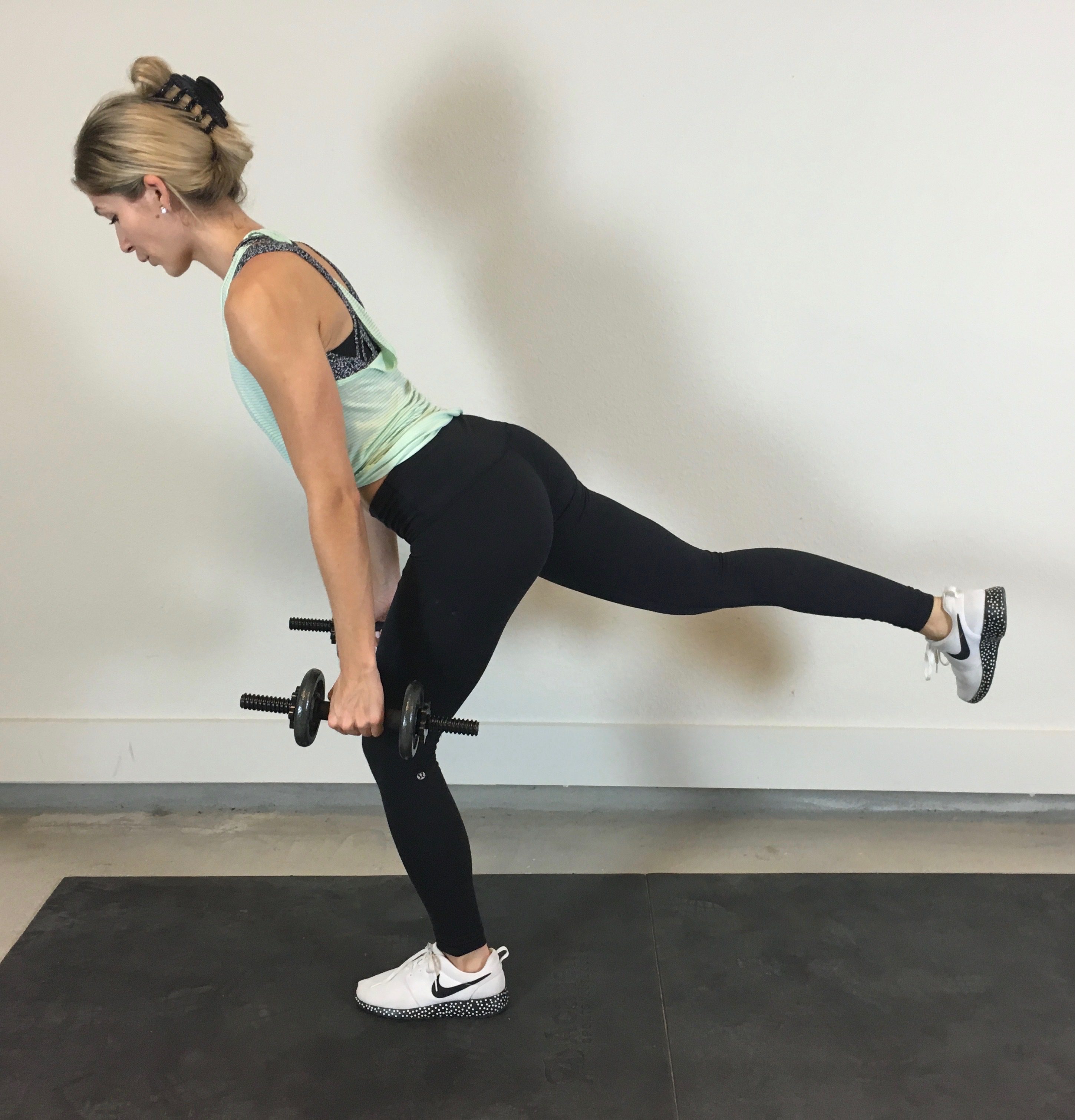I’m sure you’ve asked that question in your head or out loud by now. I remember when I got into weight training, all my inspirations were saying “lift heavy,” but what does that even mean? Does it mean the same as a general “run fast” statement where you’re just supposed to run as fast as you personally can? Or, is it more of a specific recommendation where you’re supposed to be using a particular amount of weight that’s considered “heavy?” Let me break it down for you!

HOW HEAVY IS HEAVY?
Heavy is completely relative. I grew up in Wisconsin where a big yard meant you had several acres. Now that I live in a popular Houston, Texas suburb, a big yard in my area isn’t nearly a single acre. Like yard size, heavy lifting is all relative in comparison. What may be a heavy weight for me is likely not a heavy weight for my husband who is a powerlifter.
Well, that doesn’t help us out much, right?! Wrong. To me, it means we need two things to be successful: 1) trial and error 2) weight training guide
First off, we have to be okay with trial and error. Think back to the first time you stepped into a gym. You had no idea what weight would be challenging to squat with, did you? I certainly didn’t. I likely started with dumbbells and realized I could lift more. I then tried out the barbell on my back and from there, I added weight until I found a weight that challenged me. If you’re into weight training, you’ve got to get comfortable with trailing this out.
Every new movement is something that may be experimental no matter if you’re a beginner or veteran (like the dumbbell fire hydrant exercise from this week’s leg workout). You may have tried it with a 10 lb. dumbbell and maybe it felt a bit too heavy to do with proper form. The next set, you opted for a 5 lb. dumbbell and that felt better, so you stuck with it. Trial and error leads to picking the right weight!
Second, I highly suggest a weight training guide. I’ll elaborate on this in a second, but lifting heavy is dependent upon the amount of sets and reps we are doing. I could do 1 bicep curl with a 45 lb barbell easily, but I couldn’t do 25 reps with that same weight… sets and reps play a large role what is “heavy.”

REP RANGES + WEIGHT
This is where I’ll elaborate on the benefit of using a guide while weight training. It all has to do with sets and reps, more specifically volume. Volume is something you may be familiar with if you’re a trainer or powerlifter; it’s a more technical term that takes into consideration both the number of sets and the number of reps within a workout to assess the overall workload placed on the body.
It can get pretty complex, but if you’re working with someone who understands the volume concept, you’ll be set; don’t worry… I’ve got you covered here. I can certainly do another post on volume training, but if you’re following one of my guides, all you need to focus on is the number of reps you’re aiming for. From there, we can select an appropriately “heavy” weight.
Here’s how…
First, in my guides and challenges, I select a rep range based on our physical goals. Those who are simply looking to increase strength may stick to reps under 10. Because we are interested in muscle hypertrophy (aka getting fit) and staying lean, I pick rep ranges between 12-20 reps. If you know your suggested rep range, you’re good to go.
So, for example, in today’s workout, we are completing 15 reps of Arnold shoulder presses.
TOO HEAVY OF WEIGHT= you’re aiming to complete the 15 reps of shoulder presses. At about rep 8, it gets really challenging. By rep 10, you start to see your form slip and you have to hop a bit to get the dumbbells pressed overhead. By rep 13, you can’t complete another rep. This is a sign the weight you selected is just a little to heavy at the moment. I would suggest slightly lowering the weight.
TOO LIGHT OF WEIGHT= you start on your set of 15 reps of Arnold shoulder presses. At rep 10, you’re feeling great. At rep 15, you feel your muscles working and a slight burn, but you could keep going. So, you do. in fact, you hit 20 reps. That’s a good indication you should slightly increase the weight.
A HEAVY, CHALLENGING WEIGHT= 15 reps of Arnold shoulder presses goes like this… at rep 10, you’re feeling that burn. At rep 14, you really have to focus to push out the last 2 reps. You got it… actually you were able to bang out 16 reps! Next set, you could only complete 14 reps with proper form. You choose an appropriately heavy weight!
How do you know the weight you choose was best in the last example? Well, I like to think that if you can complete 2 reps above or 2 reps below the suggested rep range, it was a good choice. If 15 reps was suggested, completing 13-17 and having the last 2-3 reps really challenge you means “lifting heavy.” If I find myself simply stopping because I hit 15 reps and not because my body was telling me to stop, I like to increase slightly for a greater challenge.

PROGRESSION
If you’ve been following my blog for awhile or worked through my Weight Training Plan, you know that I’m all about progression. Personally, I find there’s too much focus on workouts/specific exercises and not enough emphasis on training tips/styles. This is why I think so many ladies hit plateaus or feel stuck with their results. Not my LG girls who know about progression and know how to implement it!
The idea of progressive training is that with every workout, we are progressing in some way. The most relevant one to this conversation is weight increases. It’s easy to get trapped in using the same weight for an extended period of time. Take a bicep curl… how much weight do you use? Do you use that same weight every arm workout? How long have you been using that weight? If you’ve use that same weight for more than even a month or two without any variation, you could definitely benefit from more progression.
Side note – increasing the weight is not the only was I focus on progressive training. I also love increased reps, more sets, shorter rests between sets, active rests, supersets, circuits and many more. It’s why you’ll notice a lot of different styles in the workouts I share.
Anyways, getting back to progression with weight… this is totally up to you. I count on you to do that little check of: “okay, she suggests 15 reps, am I really challenged at rep 13 or is 15 reps easy to complete with this weight?!” For this reason, I actually have been a big fan of repeating workouts lately. The first week, I’ll do a leg workout for example. The following week, I’ll do that same workout; since I’m already acquainted with the exercises, I can focus more on progressing with just slightly more weight or getting just 1 additional rep with the same weight. That’s how results are seen!
Bottom line… heavy isn’t a specific number. And, it’s not worth worrying what weight someone else is using. I get asked a lot “what weight do you use for curls or squat?” I understand the question, but it’s really of no benefit to know because heavy is relative. What may be challenging for me may be too light or too heavy for you.
Instead, the best approach we can take for ourselves is to use a weight training guide (I have one for at home and one for the gym) or set workout that aligns with your physical goals. Use the suggested rep range as a baseline; trial and error until you find an appropriately “heavy” weight! From there, focus on progression week to week. It may seem a tad overwhelming at first, but I promise, very soon, you’ll be doing all of this without even realizing.






Leave a comment